.
9 Ways to Conserve Forests with Earthwatch
By Dianna Bell, Earthwatch Multimedia Manager
Trees are undercover superheroes in ecosystems. Not only do they serve as carbon reservoirs, but they also provide important cooling and health benefits by filtering air pollution, and provide sources of livelihoods for many communities. Aside from these benefits, trees serve as critical habitats for numerous species around the world. According to the World Wildlife Fund, “eight of 10 species found on land live in forests, and almost 300 million people, particularly in developing countries, live in forests, too.
At Earthwatch, our scientists and volunteers are working to protect these superheroes and the invaluable role they play. Below are nine expeditions that help to protect trees, forests, and the many species that live there. Find your next adventure today and help to protect these vital ecosystems!
.
.
1. Following Forest Owls in the Western U.S.
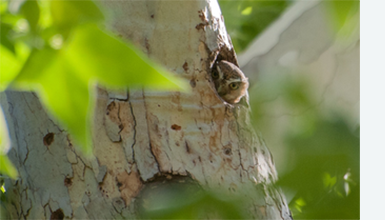
From deep within aspen groves in northern Utah to the riparian canyon and coniferous forests in southeastern Arizona, a suite of small forest owl species seeks out tree cavities, hollow openings such as those carved by woodpeckers, to build their nests. But climate change threatens to disrupt the routine of some of these species. Scientists predict that within this century, aspen forests may all but disappear in many areas. Help to measure, photograph, and band forest owls, including nestlings, in these unique habitats. Explore the usage of nest boxes as a way to replace the disappearing tree cavities as you learn about nesting and breeding behaviors and potential climate change impacts to owls and other wildlife.
.
Going out into the woods at night to capture owls is fun and exciting. Lead scientist Dave Oleyar is right – I won’t look at a tree cavity the same way again (is that a viable cavity? Looks like it, I wonder if anything is using it?).
— Hadie Muller
.
.
2. Amazon Riverboat Exploration
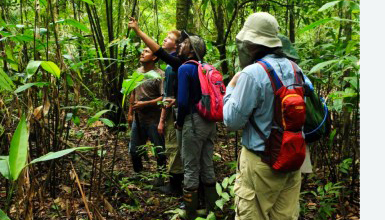
In the vast, pristine Amazonian forests of northeastern Peru, rare pink river dolphins and small alligator-like caimans swim the waters and tropical birds fly through the canopy. Survey these species and more while operating out of a historic boat – collecting data that directly shape conservation policies and help scientists understand how climate change is affecting the wildlife and the people of the region. In the rainforest, you’ll track an abundance of wildlife, including primates and game birds, and record their behavior. When the forest is not flooded, you’ll also assess wildlife presence through deployed camera traps, which document many of the creatures that walk the forests at night. Preserve this precious landscape while ensuring that the economic needs of the local communities are met.
.
I’ve been fortunate enough to have traveled to many countries to learn about other cultures. Like my previous Earthwatch experience, this one provided an opportunity to see and learn about another country and its cultures in addition to actually doing something meaningful while there. You don’t feel so much like a ‘tourist’ when there. Getting out each day and joining the biologists with their work offers a hands-on experience. Highly recommended for anyone interested in understanding what’s happening in this area from an inside perspective.
— Sandra Adams
.
.
3. NEW FOR 2020: Bird Songs of the Olympic Peninsula
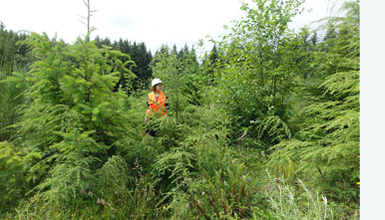
Deep within the woodlands of the Olympic Peninsula stand some of the largest and oldest trees on the planet, some more than 1,000 years old. Here, researchers are exploring the balance between community well-being and the conservation of wildlife habitat. Hike along twisting streams amidst towering evergreens to record bird calls and collect habitat data, which will help to inform forest managers about how wildlife responds to different management approaches.
.
.
4. Investigating Threats to Chimps in Uganda
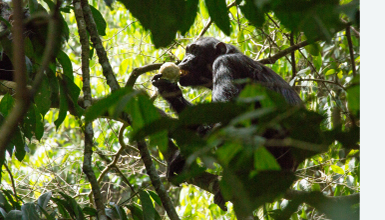
Within the largest remaining tropical rainforest in East Africa, chimpanzees and other primate species are struggling to find enough food, driving them to increasingly raid farmers’ crops. Join researchers in investigating what is causing the mysterious decline in fruiting tree productivity. As you trek through this gently rolling forest, you will observe wild chimps and monkeys, help capture and band fruit-eating birds, and examining fruiting tree patterns, revealing how climate change is impacting this landscape and the people living outside the forest.
.
I’ve been fortunate enough to have traveled to many countries to learn about other cultures. Like my previous Earthwatch experience, this one provided an opportunity to see and learn about another country and its cultures in addition to actually doing something meaningful while there. You don’t feel so much like a ‘tourist’ when there. Getting out each day and joining the biologists with their work offers a hands-on experience. Highly recommended for anyone interested in understanding what’s happening in this area from an inside perspective.
— John Kokko
.
.
5. Toucans, Parrots, and Other Wildlife in Costa Rica’s Forests
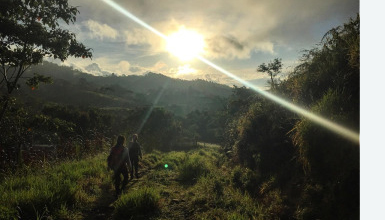
The forests of Coto Brus, Costa Rica are teeming with wildlife, but ongoing habitat fragmentation and destruction are putting many species at risk. Some rural farmers and landowners have been planting fruiting trees on their properties, which may be supporting the regrowth and resilience of these tropical forests. Help scientists to investigate this theory as you monitor toucans, parrots, reptiles, and other fruit-eating, seed-dispersing species, collecting data that will inform policies to conserve wildlife and support local communities.
.
The goal of learning how stepping stones, patches, and corridors of forest are utilized by various species is vital in reaching out to landowners to encourage sustaining measures. Interviewing the local landowners to understand their perspectives about the forest is vital to helping scientists understand and support the landowners’ needs as well as encourage environmental conservation. It was exciting to be a part of the data collection team and to work in the field, on the properties, to get a true perspective of the landowners’ usage. Of course, the deep-forest transects, experiencing the dense forest as well as the siting of toucans, parrots, sloths, and white-faced capuchins was absolutely incredible!
— Gabrielle Schavran
.
.
6. NEW FOR 2020: Wildlife and Reforestation in Brazil
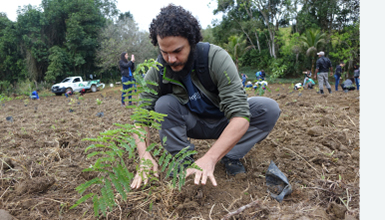
Around the world, ecosystems are collapsing as trees are logged and forests disappear. Brazil’s once vast Atlantic Forests has been reduced to less than one-sixth of its former size. Large-scale reforestation efforts aim to reverse this decline. However, there is little information on how mammals respond to regaining habitat from these reforestation programs. Help researchers monitor mammals, measure trees and plots, and plant trees, which will inform management plans and reforestation decisions.
.
.
7. Climate Change: Sea to Trees at Acadia National Park
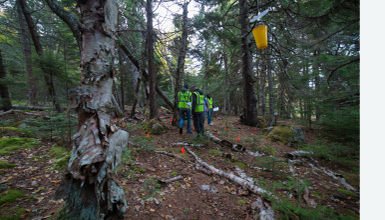
The granite mountains and craggy coasts of Maine’s Acadia National Park are famous for their beauty and wildlife. But things are changing. The forests are dynamic systems and we have many questions about how they are responding to a changing climate – which species will stay, which will move out, and which will move in? Contribute to over 120 years of observations, giving researchers a more complete picture of how this iconic landscape is transforming. Assist scientists in returning to established longterm forest monitoring plots surveyed by Earthwatchers in the 1990s to survey the plants, soil, and human use of the plot to pursue answers to these questions. Collect samples in the intertidal zone, assess the impacts of ocean acidification and warming on tide pool organisms, and study the food availability for migrant and nesting songbirds as you contribute to the development of policies to safeguard this national treasure.
.
I kept hearing the words of Robert Frost, ‘two roads diverged in a yellow wood,’ as we walked down the numerous trails. Eventually, we found ourselves off the trail and identifying berry bushes and counting berries. The work to most might seem tedious and unimportant, but to a researcher comparing the phenology of berry bushes to those of migratory birds, this data was crucial.
Participating in this study really opened my eyes to the reality of how climate change affects more than just the polar ice caps and ocean temperatures. It affects the berries, the birds and the larger predators that rely on these natural cycles to repeat themselves year after year. Beyond the science of it, the relationships formed were very well welcomed and cherished. Our team laughed together, played together, and learned together. Between the new learning and the new relationships, this trip really transformed me and motivated me to advocate for change. I will cherish the memories and hopefully use them to inspire change in others.
— Michael Harvey
.
.
8. Mapping Biodiversity in Cuba

Cuba’s wild landscapes have long been off-limits to international research due to longterm political complexities. But Earthwatch volunteers are now helping scientists to map this biodiversity hotspot. The mountainous forests of Lomas de Banao Ecological Reserve and the fresh wetlands of Tunas de Zaza Wildlife Refuge are home to species only found in the Caribbean—including the vulnerable Cuban Parakeet and the near-threatened Cuban Amazon Parrot. Document endemic and migratory bird species, monitor amphibian species, and survey trees in a protected reserve to paint a more complete picture of how increased development could impact Cuba’s biodiversity in the future.
.
Mapping Biodiversity in Cuba is an amazing opportunity to experience so many high points – daily interactions with incredible plants, birds and animals, hands-on participation in local conservation efforts and most of all, becoming friends with the Cuban team who genuinely treated us like family.
— Andrea Jadwin
.
.
9. Wildlife in the Changing Andorran Pyrenees
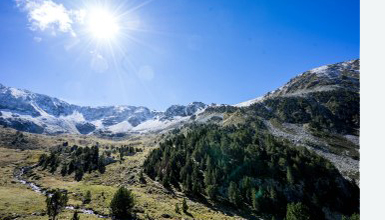
In the high slopes of the Andorran Pyrenees, climate change is causing irreversible changes. Help researchers investigate these changes as you document the biodiversity of forests and alpine meadows. Follow daily tree growth, band birds, monitor nest boxes, assess mammal diversity with camera and small mammal traps, study alpine flowers and fungi, and assess soil health in this remote mountain ecosystem. With your help, researchers will be able to determine how animals are faring, and how to best protect key species.
.
I admit, I originally looked at this expedition because I had not heard of Andorra so I figured I needed to check it out. But even after reading all the great reviews, Andorra and this expedition exceeded my expectations. The terrain is steep and be prepared to hike it, but it is breathtakingly beautiful and incredibly rewarding to be part of the research and important data being collected here. I was impressed to learn that Andorra values environmental research projects and helps support the team with absolutely lovely accommodations and food.
As the climate is changing and temperatures are rising, flora and fauna are being forced to evolve, move, or face extinction. This expedition site is an ideal location to conduct the numerous research projects that collect data tracking what is occurring with tree lines, birds, mammals, insects, soil conditions, and plants without some of the impacts of more populated areas. And to make the adventure and work fun, the researchers are wonderfully enthusiastic people and are a joy to work with. Definitely a wonderful expedition!
— Trina Warren
.
Learn more about the important role forests play by reading blog posts from Earthwatch scientists Drs. Richard Bodmer and Meg Lowman:
- Amazon Burning: How Earthwatch’s Research is Helping to Conserve the Amazon and Reduce Fires
- How to Save the Planet, One Tree at a Time
.
Sign up for the Earthwatch Newsletter
Be the first to know about new expeditions, stories from the field, and exciting Earthwatch news.